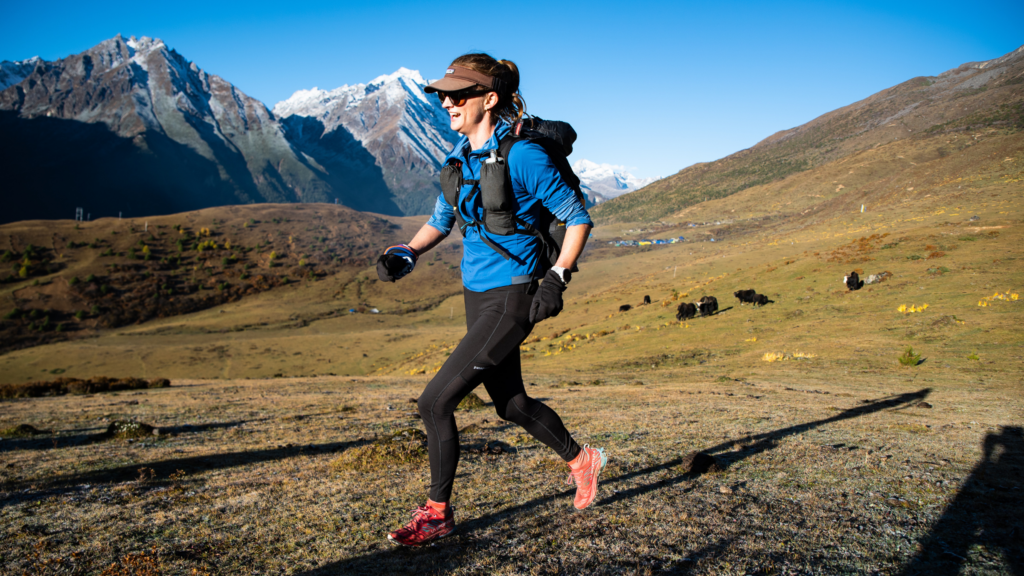The Snowman Race, a grueling five-day, 110-mile stage race held in the Bhutanese Himalayas, has emerged as a compelling backdrop for runners seeking challenges that test both their physical limits and their mental resilience. Set against the harsh conditions at high altitudes, the race has tested experienced ultrarunners from around the globe. With steep climbs surpassing 17,000 feet and terrain varied from rocky trails to ice-covered paths, it offers a unique opportunity to assess how altitude impacts pace, recovery strategies, and gear selection.
Racers participating in this race must train comprehensively to adapt to the significant changes in elevation and temperature. Participants are required to familiarize themselves with hypoxia training regimes, which simulate the low oxygen levels experienced at altitude. Such preparations can markedly influence performance, allowing runners to build an efficient pacing strategy and sufficient endurance for the substantial vertical gain during each stage. Learning to acclimatize before the race—possibly through pre-race excursions to similar elevations—can be critical. The psychological demands of racing at altitude cannot be overlooked, as fatigue manifests not solely through physical exertion but through the mental strain of navigating isolation and extreme conditions.
The inaugural race in 2022 and subsequent editions have demonstrated that the event serves not only as a test of endurance but also as a medium for raising awareness about climate change, particularly as participants witness the impacts firsthand while racing. This linkage between environmental advocacy and racing creates a deeper layer of significance for competitors. This year, the race has gained attention as experience reveals how essential it is to address environmental elements affecting the course, with climactic alterations leading to changes in snow and ice conditions. Runners will need to adapt their gear and strategies accordingly. Those familiar with layering systems and weight distribution may find it advantageous to reassess their equipment leading into such conditions.
The course has been noted for its unpredictability, notably in sections like Gophu La Pass, where years of glacier recession have altered the landscape. Experienced runners know that terrain conditions can shift dramatically, influencing pacing, nutrition strategies, and recovery needs during the race. Discussions among competitors often center on keeping the feet dry and managing calorie intake effectively during long stretches away from aid stations, which are situated far apart in remote locations. As runners traverse varying climatic zones, thermal regulation becomes essential, requiring the utilization of lightweight but insulated material to maintain body temperature without adding excessive bulk.
Athletes have reported that preparation for rugged and unpredictable conditions—where muddy trails can plague footing and steep ascents test endurance under duress—represents a new frontier for training methodologies. Insights from seasoned competitors highlight the importance of mental resilience in electric moments of uncertainty, as some runners navigated creek crossings that were not part of their planned route and had to adjust their pacing dramatically to take unexpected delays into account, which could ultimately compromise their overall time and mental state.
The Snowman Race has not only attracted attention for its challenges but also for the significant athlete insights it yields. Each stage offers different tactical challenges, and with strong competition, runners must be strategic about their pacing—especially in the context of cumulative fatigue. For instance, taking a cautious approach on initial stages to preserve energy for the latter days has proven effective among top performers. Conversely, rapid degradation of mountain trail quality during extreme weather also requires on-the-fly decision-making about when to push forward and when to reserve energy.
As the race continues to evolve, it remains imperative for competitors to remain informed about course updates and environmental changes affecting the landscape. Maintaining an agile mindset in the face of shifting conditions can provide a crucial edge, particularly in high-stakes ultrarunning endeavors where even minor decisions can impact overall performance.
Equally important is understanding how gear innovation plays a role in runner peace of mind while navigating the rugged terrains. This year has seen advancements in lightweight trail footwear designed to enhance traction and minimize water absorption while providing maximum comfort over extended distances. Runners should be aware of the latest gear updates that enhance reliability and performance, knowing that despite the weight of their packs, every ounce saved contributes to a greater overall efficiency during long, multi-day efforts.
In conclusion, for ultrarunners focused on maintaining performance amidst the challenges of high-altitude races like the Snowman Race, mental fortitude and tactical training are just as essential as physical preparation. The implications of altitude, weather, and increasingly unpredictable terrain underlines the necessity for ongoing adaptation and responsiveness to shifting conditions. Being prepared to adjust everything from pacing to gear selection not only enhances performance but also ensures a more enlightened approach to racing in an environment increasingly impacted by the realities of climate change. Ultimately, maintaining flexibility in strategy and a willingness to embrace the unknown can streamline the pathway to success in mountain ultrarunning.
